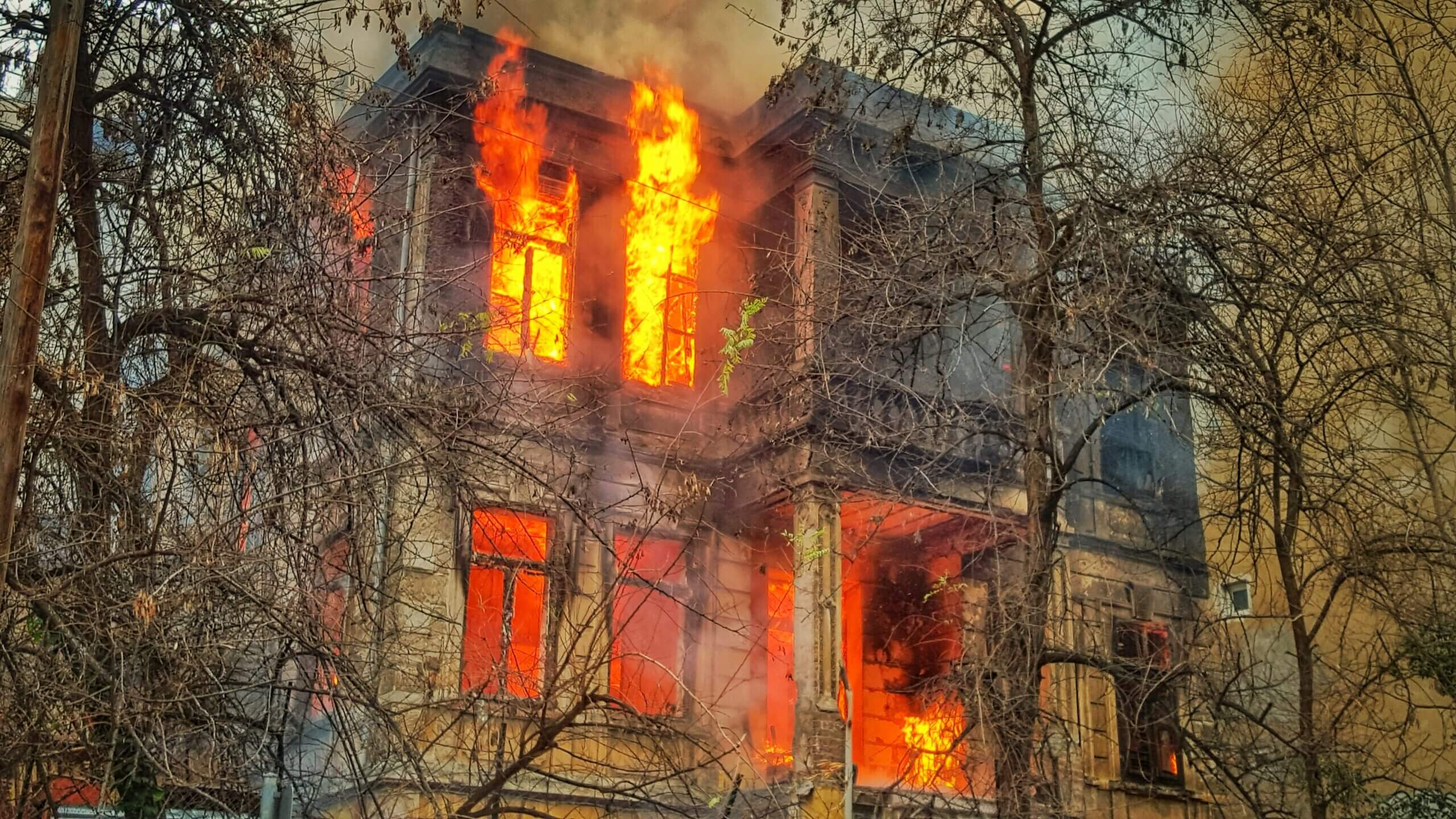Fire, Smoke & Soot Damage Restoration
Fires can cause extensive damage in just minutes, leaving homeowners with the overwhelming task of restoring their property. In addition to structural damage from the flames, smoke, soot, and water from firefighting efforts can create further destruction. Taking swift action is critical in preventing additional issues, such as mold growth or structural weakening due to water damage.
Whether dealing with a small, contained fire or extensive property loss, understanding the fire damage restoration process is essential. This guide will walk you through types of fire damage, the steps to restore your home, cost factors, and how to choose the right professionals for the job.
Fire damage can leave behind more than just burned materials and structural concerns — it often results in smoke residue, water damage from firefighting efforts, and mold risks from lingering moisture. If you’re recovering from a fire, it’s important to address hidden damage caused by smoke, excess water, and possible mold growth. For a full recovery plan, visit our mold remediation, water damage restoration, and sewage cleanup guides to ensure every aspect of your home is restored properly.
Types of Fire Damage
Fire damage extends beyond what is visible. While burned materials are the most obvious result of a fire, smoke, soot, and water damage can cause long-term structural and health risks if not properly addressed.
Primary Fire Damage
This refers to direct damage from the fire itself, including:
- Burned or charred materials such as walls, floors, and personal belongings
- Structural weakening of key components like roofing and support beams
- Destroyed appliances, furniture, and electronics
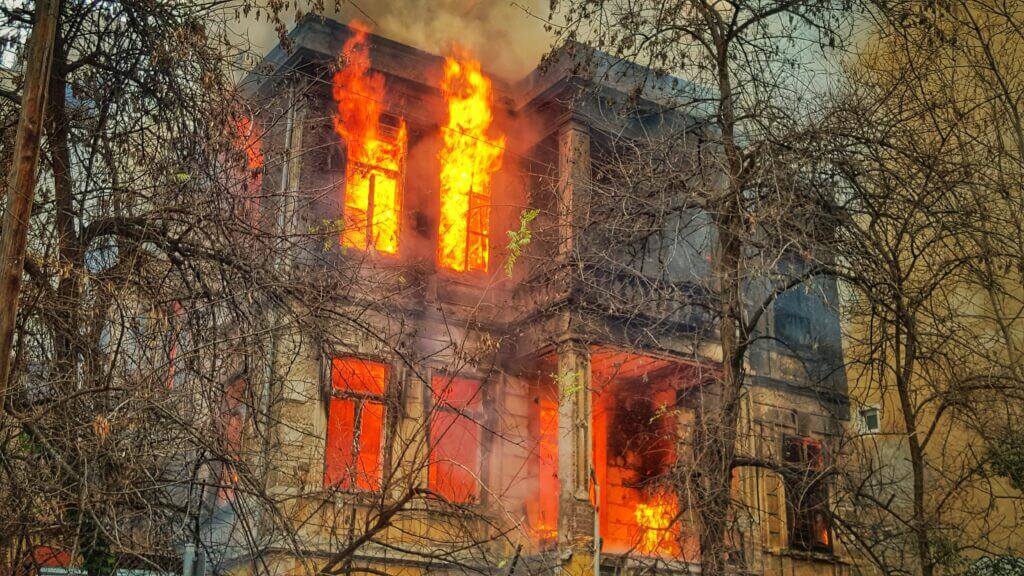
Secondary Fire Damage
Even areas untouched by flames can be affected by:
- Smoke and soot contamination staining walls, ceilings, and furniture
- Lingering odors that embed in carpets, fabrics, and porous materials
- Water damage caused by firefighting efforts, which can lead to mold growth if not dried properly
Smoke and Soot Damage
Smoke particles travel quickly throughout a home, even into unburned areas, creating:
- Discoloration on walls, ceilings, and furniture
- Corrosion of metal surfaces like kitchen appliances and electronics
- Health hazards, as inhaling soot particles can cause respiratory issues
Professional restoration services use advanced cleaning techniques such as HEPA filtration, thermal fogging, and air scrubbing to remove soot and lingering odors effectively.
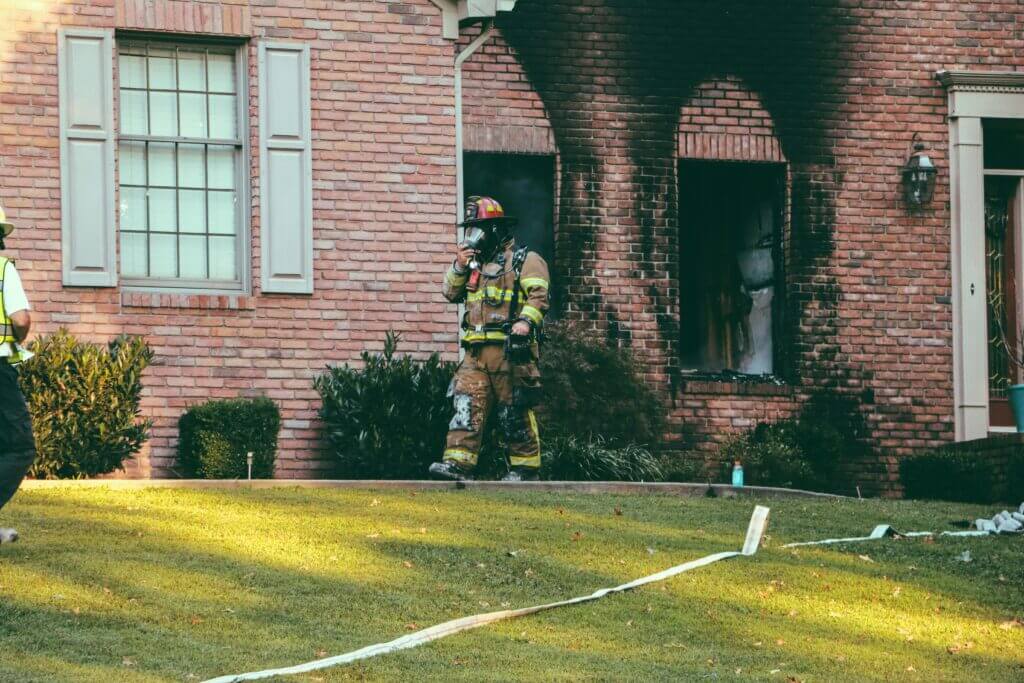
Frequently Asked Questions
What Is Fire Damage Restoration?
Fire damage restoration is a multi-step process that involves assessing, cleaning, repairing, and rebuilding after a fire. The goal is to return the property to its pre-fire condition while ensuring safety, structural integrity, and air quality.
Fire restoration professionals remove soot and smoke residue, address water damage from firefighting efforts, deodorize affected areas, and perform necessary repairs to damaged structures and belongings.
Steps in the Fire Damage Restoration Process
The restoration process is a detailed and methodical series of steps aimed at returning the property to its condition before the fire.
- Securing the Property and Accessing the Damage: After the fire is extinguished, the first step in restoration is to assess the damage and ensure the building is structurally safe. This often involves boarding up windows and doors or providing temporary roofing to prevent further exposure to the elements.
- Water Removal: If water damage is present, restoration professionals will begin by extracting any standing water and drying out the affected areas. This is critical to prevent mold growth and further structural damage.
- Smoke and Soot Cleaning: Cleaning soot and smoke damage is one of the most time-consuming tasks in the restoration process. Specialized cleaning products and techniques, including air scrubbers and deep-cleaning equipment, are used to remove residues from walls, ceilings, and other surfaces.
- Odor Removal and Sanitation: Deodorization is essential to eliminate any lingering smoke smells. This often involves ozone treatments or thermal fogging to neutralize the odors. Additionally, sanitization is carried out to ensure a healthy living environment.
- Repairing and Rebuilding: The final phase of the process is to repair structural damage and rebuild the property. This often includes replacing drywall, repairing plumbing or electrical systems, repainting surfaces, and replacing flooring.
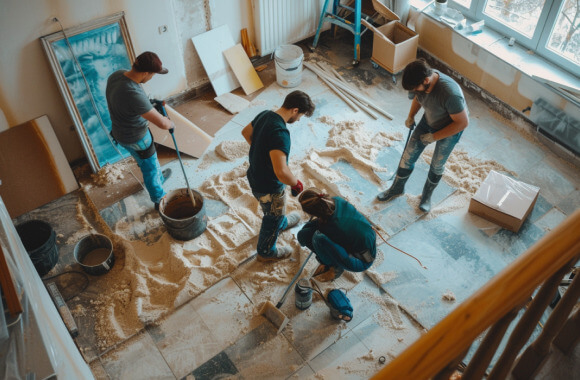
Frequently Asked Questions
How Much Does Fire Damage Restoration Cost?
Fire damage restoration can cost anywhere between $3,000 and $75,000, with the average homeowner typically paying between $10,000 and $30,000. The final cost depends on the severity of the fire, the size of the property, and the extent of the damage. For smaller fires that were contained to a specific area or room, costs will likely be on the lower end of the spectrum. Major fires that require extensive repairs and rebuilding can quickly reach into the tens of thousands of dollars.
| Fire Damage Type | Cost Range |
|---|---|
| Small, Contained Fire | $3,000 to $10,000 |
| Moderate Fire Affecting Multiple Rooms | $10,000 to $30,000 |
| Major Fire Requiring Rebuilding | $30,000 to $75,000+ |
Factors Affecting Fire Damage Restoration Costs
Several factors can influence the overall cost of fire damage restoration:
- Property Size: Larger homes or commercial properties will generally cost more to restore, simply due to the amount of work and materials required.
- Extent of Damage: If the fire caused significant structural damage, or if multiple areas are affected, the cost of restoration will be higher.
- Services Needed: Costs can vary depending on whether additional services such as mold remediation, full-scale water extraction, or electrical and plumbing repairs are necessary.
- Insurance Coverage: Many homeowners rely on insurance to cover the costs of fire damage restoration. Policies vary widely, so it’s important to understand what’s covered and what isn’t. Some policies may cover cleaning, repair, and rebuilding, but may not cover the full extent of smoke damage or contents replacement.
Topics to Explore
Choosing the Right Fire Damage Restoration Service
Hiring a certified fire restoration company ensures a safe and efficient recovery. Consider the following when selecting a service:
- Certifications: Look for IICRC or RIA-certified professionals.
- Emergency Availability: Fire damage restoration requires immediate response to minimize damage.
- Comprehensive Services: Choose a provider that handles everything from smoke removal to full repairs.
- Customer Reviews & Reputation: Check BBB ratings, testimonials, and industry experience.
- Insurance Assistance: A good restoration company will work with your insurance provider for claims processing.
Frequently Asked Questions
Preventing Fire and Smoke Damage: Tips for Protection and Preparedness
Fire and smoke damage can be devastating, leading to costly repairs and health hazards from lingering smoke particles. While professional fire damage restoration can help recover your home after an incident, taking preventative measures is essential for minimizing fire risks. Regular maintenance, fire safety practices, and quick responses to hazards can significantly reduce the likelihood of fire and smoke damage. Here’s how to protect your home and family.
Regular Maintenance to Prevent Fire and Smoke Damage
- Install and Maintain Smoke Alarms: Ensure working smoke detectors are installed on every floor and inside each bedroom. Test them monthly and replace batteries every six months.
- Keep Electrical Systems in Check: Inspect wiring, outlets, and circuit breakers regularly for signs of wear, overheating, or damage. Avoid overloading outlets and replace outdated wiring in older homes.
- Clean Chimneys and Fireplaces: If you use a wood-burning fireplace, schedule annual chimney cleanings to remove creosote buildup, which can ignite and cause chimney fires.
- Maintain Kitchen Safety: Never leave stovetops or ovens unattended while cooking. Keep flammable materials like towels and paper towels away from burners. Install a fire extinguisher in the kitchen for emergencies.
- Check and Maintain Heating Systems: Furnaces, space heaters, and HVAC systems should be inspected annually to prevent fire hazards. Keep flammable objects at least three feet away from heat sources.
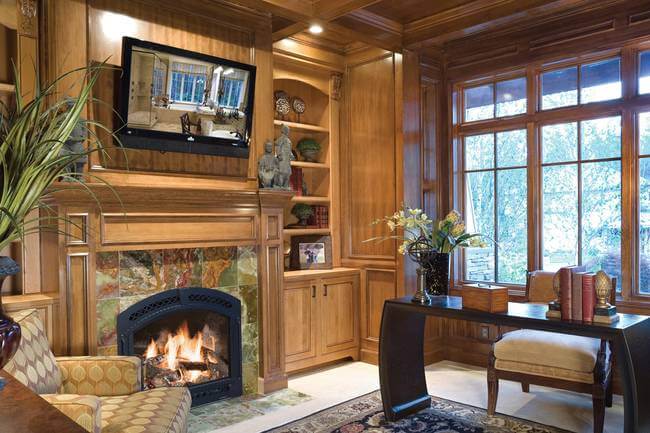
Preparing for Potential Fire Risks
- Use Fire-Resistant Building Materials: When renovating or building, consider installing fire-resistant siding, roofing, insulation, and drywall to slow fire spread.
- Create a Defensible Space (for wildfire-prone areas): Keep vegetation trimmed, remove dry brush, and maintain a 30-foot buffer zone around your home.
- Install Fire Sprinklers: Fire suppression systems can stop flames before they spread, reducing potential damage.
- Practice Fire Escape Plans: Develop and practice a family evacuation plan, identifying multiple escape routes and a designated meeting point.
Mitigating Fire and Smoke Damage When It Happens
- Act Quickly: If a fire starts, get out immediately and call 911. Never attempt to extinguish large or spreading fires on your own.
- Use Fire Extinguishers Properly: Keep multipurpose extinguishers in key areas like the kitchen, garage, and bedrooms, and ensure household members know how to use them.
- Reduce Smoke Infiltration: Close doors when escaping a fire to slow the spread of smoke. Use damp towels to block gaps under doors.
- Minimize Smoke Damage After a Fire: If smoke damage occurs, immediately air out the home by opening windows and using fans and air purifiers to remove lingering particles.
- Call Professional Restoration Services: Fire and smoke damage can’t always be cleaned with DIY methods. Restoration professionals use specialized cleaning, deodorization, and structural repair techniques to ensure your home is safe.
Taking these preventative measures can significantly reduce the risk of fire and smoke damage in your home. If a fire does occur, acting quickly and hiring a professional fire restoration service can help minimize long-term damage and health risks.
Ready to get your project started?
Let us find the best restoration pros in your area, then easily request quotes, book a contractor, and get the job done. It's that easy.
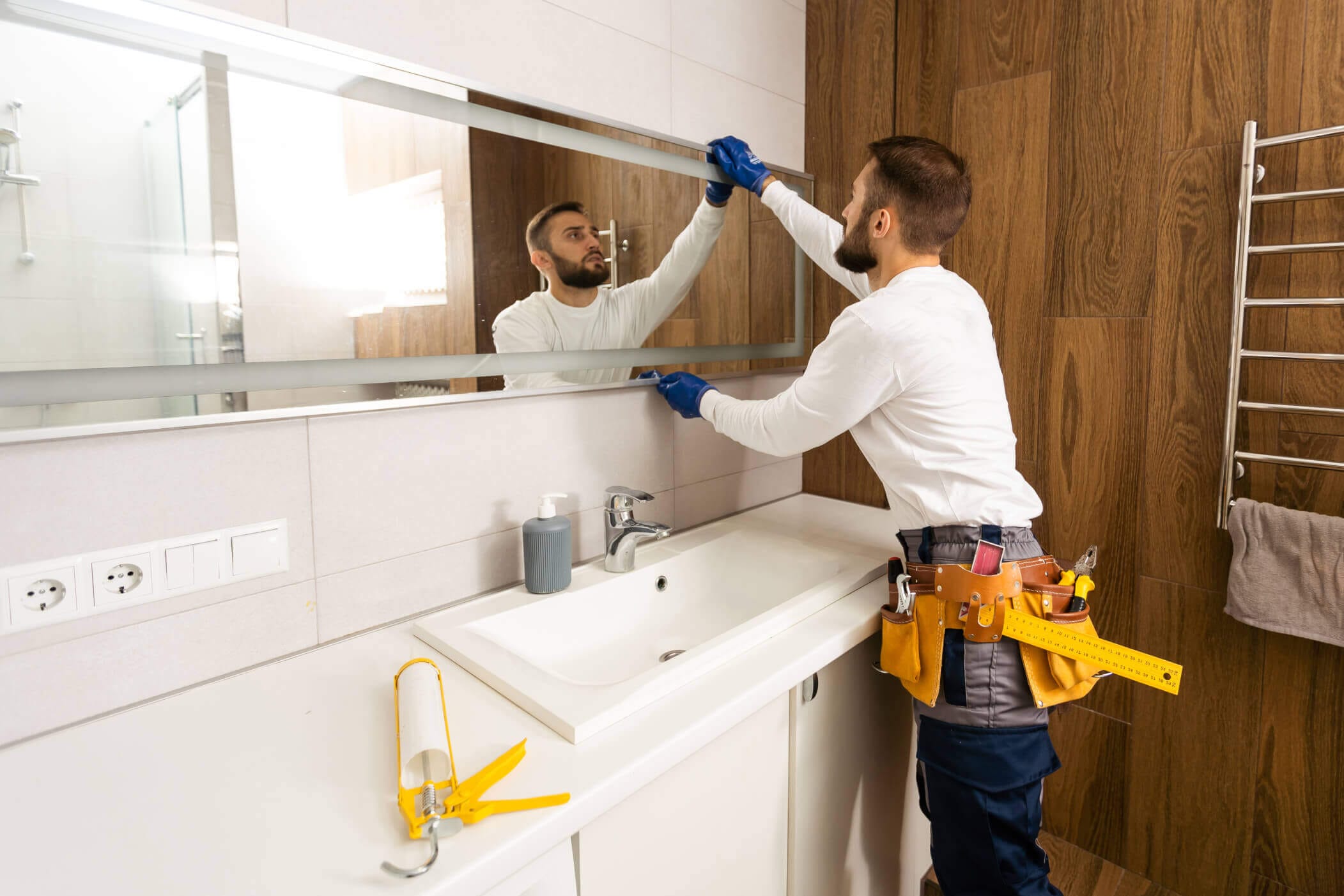
Real Stories, Real Success
See how our solutions empower homeowner projects and experiences.
